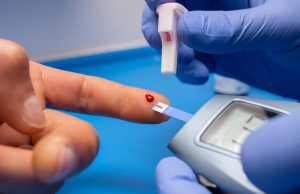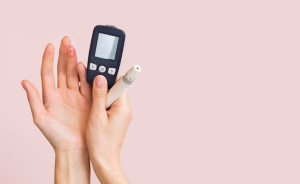Think about a health condition where the body’s natural ability to produce or handle insulin isn’t functioning as it should. This situation, diabetes, leads to abnormal metabolism of sugars and high levels of glucose in the blood. If you have a diagnosis or know someone who does, then this guidance is specifically for you. As we see Type 1 and Type 2 diabetes on the rise globally, it’s increasingly essential to get a good handle on understanding and managing this condition.
About the Diabetes
Contents
In simplest terms, diabetes mellitus is a condition where your body struggles with high sugar levels due to issues with insulin production or usage. Type 1 diabetes occurs when the body’s immune system mistakenly attacks its own insulin-producing cells, resulting in an insulin shortage. On the flipside, Type 2 diabetes typically evolves from a situation of insulin resistance in the body.

Symptoms cover a range – from needing to urinate more frequently, constantly feeling thirsty, unending fatigue, slower wound healing, variations in vision, to unpredictable weight shifts. It’s important to note that these symptoms can widely vary from person to person. Recognizing these symptoms can enable proactivity in dealing with diabetes effectively.
Recognizing the Symptoms
What’s interesting about diabetes symptoms is that they might be subtle, or in some instances, completely unnoticeable, underlining the importance of early detection. Be on the lookout for signs like constant fatigue, delayed wound healing process, unexpected weight fluctuations, perpetual thirst, increased frequency of urination, and even issues with vision.
It’s also noteworthy that certain symptoms can be specific to the type of diabetes a person has. For example, Type 1 symptoms can appear out of the blue and intensify rapidly. In contrast, Type 2 symptoms usually surface gradually, making them a bit harder to identify. Taking note of these symptoms at the earliest can help reduce complications and boost long-term health.
Figuring Out and Staying on Top
You’re wondering how we figure out if someone has diabetes, typically it starts with noticing certain symptoms that make us think, “Hold on, this could be diabetes.” From there, we check the individual’s blood sugar levels. We usually do this after a full night’s sleep, when no food has been eaten, or at any random time during the day. Once we know it’s definitely diabetes, the work doesn’t stop there. Regular check-ins on blood sugar levels become a key part of managing life with diabetes.
It doesn’t matter if it’s Type 1 or Type 2 diabetes, keeping a consistent eye on your blood sugar levels is key. Regularly checking your levels gives us important info for the game-plan to manage the disease effectively. It also supports keeping these levels as close to normal as possible.
Everyday Management
Living with diabetes certainly means you’ll need to adjust some of your daily habits, but it’s not nearly as daunting as it might seem. Time to embrace those tasty fruits, vegetables, and lean meats. Just by making small changes to what you eat, you can make big strides in managing your blood sugar levels. Add in regular exercise and you’re on a solid path to staying healthy and keeping risks like heart disease and stroke at bay.
For folks managing Type 1 diabetes, you’ve got to get the balance right between your insulin doses, the food you eat, and your physical activity. If you’re navigating Type 2 diabetes, tweaking your lifestyle might be all you need to maintain control. Of course, sometimes medications or insulin might join the party for that extra support. The key is all about finding your unique rhythm and maintaining that harmony.

Exploring Treatment Paths
When it comes to getting a handle on diabetes, there’s a variety of treatments out there – think of it like a medical toolbox. Medications are the main tools, things like metformin, sulfonylureas, and those modern SGLT2 inhibitors, all geared towards keeping your sugar levels right where they should be.
Complication and Prevention
If diabetes runs wild, it can cause some pretty serious issues like heart complications, strokes, kidney woes, eye problems, nerve damage, and even affect pregnancy. To keep these risks at bay, it’s all about taking charge of your blood sugar with a winning combo of healthy eats, regular workouts, and maybe medication if that’s part of your game plan.

Breakthroughs in Diabetes Care
Things are looking up in the world of diabetes care with all the latest cool tech. We’re talking about gadgets like continuous glucose monitors that keep tabs on your sugar levels, insulin pumps that deliver the good stuff without the constant pokes, and we’re even flirting with tech that mimics a healthy pancreas.
There’s also been a parade of new meds hitting the scene for both Type 1 and Type 2 diabetes. These include clever drugs like GLP-1 receptor agonists and SGLT2 inhibitors that don’t just manage sugar levels—they can help you keep your weight in check and make your heart happier.

Everyone’s diabetes story is unique, a road that requires you to be alert, resilient, and in it for the long haul. But remember, diabetes doesn’t define who you are; it’s just one part of your life’s puzzle. With solid know-how, a take-charge attitude, and lifestyle choices that keep you on your toes, you’ve got what it takes to manage diabetes like a champ. Plus, there’s a whole menu of treatments out there, making it totally doable to live a full and joyful life with diabetes.
If diabetes is part of your life’s script—or if you think it might be crashing your scene soon—touch base with a healthcare pro. They’re the MVPs who can tailor the playbook just for you. Plus, there’s no shortage of trustworthy info and backup online and around town to pump up your knowledge and support.
Tackling diabetes is a marathon, not a sprint, with its share of hurdles and high-fives. But with the right tools and teammates, you’re set to navigate this path with confidence and grace.

